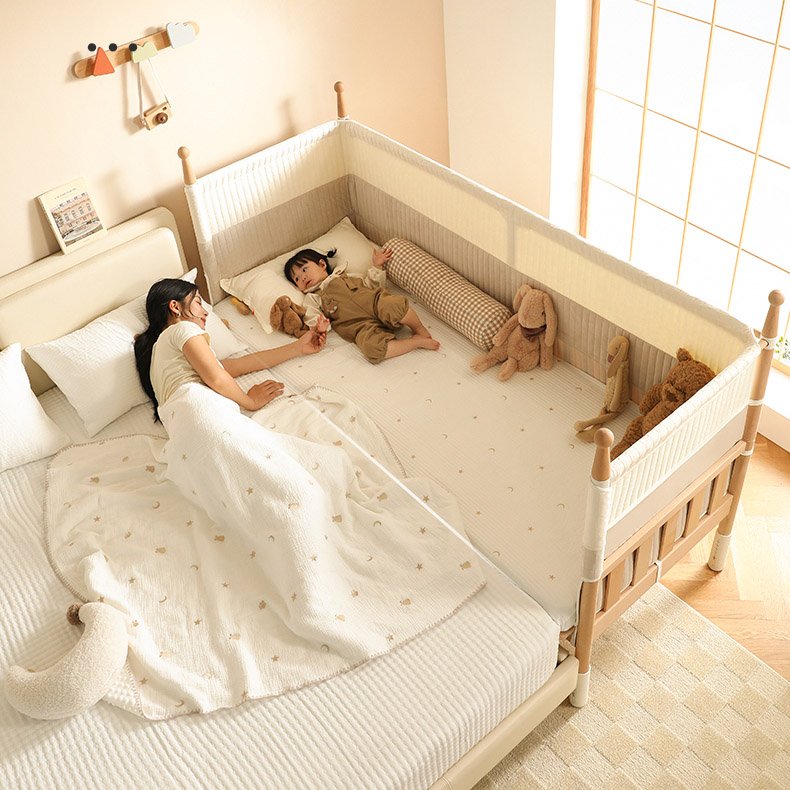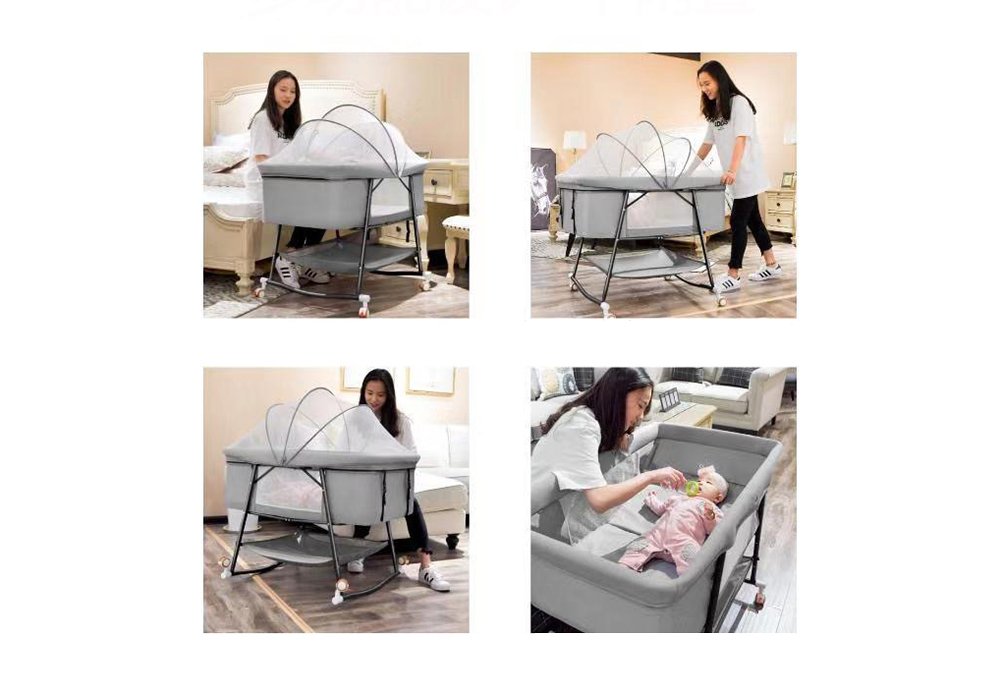Getting a baby to sleep in their crib can feel like solving a mystery with no clues. If you’ve ever stood over the crib, holding your breath as you lower a snoozing baby—only to have their eyes fly open the moment they hit the mattress—you’re definitely not alone. But here’s the good news: with the right mix of patience, timing, and strategy, crib sleep can happen. And it can even be peaceful. Let’s break it down.
Table of Contents
- Understanding Baby Sleep Patterns
- Common Reasons Babies Resist the Crib
- Preparing the Crib for Sleep Success
- Establishing a Bedtime Routine
- Transitioning from Co-Sleeping or Rocking
- Teaching Independent Sleep Skills
- Handling Night Wakings the Right Way
- Naps Matter Too
- When Things Don’t Go As Planned
- Final Thoughts
- FAQs
- Share This Case:
Understanding Baby Sleep Patterns
Before diving into tactics, it helps to understand how babies sleep. They’re not just tiny adults; their sleep cycles are wildly different.
Newborn vs. Older Baby Sleep Cycles
Newborns sleep in short bursts—usually 2 to 4 hours—because their tummies are tiny. By around 4 to 6 months, many babies can start sleeping for longer stretches. That’s when crib training often begins.
The Role of Sleep Associations
Babies love routines. If they’re used to falling asleep while being rocked, fed, or snuggled, they’ll expect the same when they wake during the night. These are called sleep associations, and breaking unhelpful ones is key to crib success.
Common Reasons Babies Resist the Crib
Let’s face it: some babies just aren’t into cribs. But usually, there’s a reason behind the drama.
Separation Anxiety
Babies don’t understand object permanence until about 8 months. That means when you leave, they think you’re gone forever. No wonder they cry when placed alone in a crib!
Unfamiliar Environment
A crib can feel cold and empty compared to a parent’s arms. The firmness, silence, and even the crib bars can make it hard for them to settle.
Sleep Regression Phases
Just when things seem to be improving, boom—regression hits. At 4, 8, and 12 months (give or take), developmental leaps can cause disrupted sleep and renewed crib resistance.
Preparing the Crib for Sleep Success
Your baby’s crib needs to feel like a sanctuary.
Safe Sleep Guidelines
Always place baby on their back. Keep the crib free from pillows, toys, bumpers, and blankets. A fitted sheet on a firm mattress is all you need.
Creating a Cozy, Sleep-Inducing Environment
Lighting
A dark room signals the brain to produce melatonin, the sleepy hormone. Use blackout curtains to block light.
Temperature
Keep the room between 68–72°F (20–22°C). Overheating can make babies restless.
White Noise
White noise mimics the whooshing sounds of the womb. It also drowns out household noises that might wake your baby.

Wooden Crib For Baby
Baby Full Size Crib & Playard Breathable Baby Crib Tool-Free Assembly Baby Bed
Features
- 3-In-1 Convertible Crib
- Adapts To Your Growing Baby
- Greenguard Gold JPMA Certified, Safety Tested
- Quality Craftsmanship
- Award-Winning Brand
Establishing a Bedtime Routine
Babies thrive on rhythm and repetition.
Importance of Consistency
A predictable bedtime routine tells your baby, “It’s time to sleep.” The more consistent you are, the faster they catch on.
Examples of Effective Routines
- Bath
- Massage
- Pajamas
- Feeding
- Storytime or lullaby
- Crib
Keep it calm, quiet, and under 30 minutes.
Transitioning from Co-Sleeping or Rocking
If your baby is used to falling asleep in your arms or next to you, moving them to a crib takes finesse.
Gradual Methods
Start with naps in the crib while doing nights together. Or move the crib into your room before transferring it to the nursery.
Pick-Up Put-Down Technique
This involves placing baby in the crib and picking them up when they cry. You repeat until they settle. It builds trust and slowly teaches them to sleep independently.

Modern Baby Crib with Mosquito Net
3 in 1 Baby Bassinet Bedside Sleeper Bedside Crib for Baby Adjustable Baby Bassinet with Wheels
Features
- Tool-Free Assembly
- Easy-to-Clean Materials
- Removable Mattress Pads and Liners
- Pop up folding
- Non-toxic to promote a healthy sleep environment.
Teaching Independent Sleep Skills
This is the magic formula for restful nights—for both of you.
The Power of Drowsy but Awake
Instead of letting baby fall asleep in your arms, aim to place them in the crib just before they doze off. This teaches them how to fall asleep in the crib on their own.
Self-Soothing Strategies
Every baby is different. Some may suck their fingers, hum, or turn their heads side to side. Give them the chance to figure it out (with your support, of course).
Handling Night Wakings the Right Way
Night wakings are normal—but they don’t have to be exhausting.
When to Intervene vs. Letting Them Settle
If your baby’s cries are mild and short, wait a few minutes before going in. They might surprise you by settling on their own.
Sleep Training Approaches (Ferber, Chair Method, etc.)
- Ferber: Gradually increase the time before you check on your crying baby.
- Chair Method: Sit in a chair next to the crib, offering presence but not picking them up.
- No-Cry: Slow, gentle transitions with lots of support.
Pick what feels right for your parenting style and your baby’s temperament.
Naps Matter Too
A well-rested baby sleeps better at night. Skipping naps often backfires.
Timing Nap Schedules
Follow wake windows:
- 0–3 months: 45–90 mins
- 3–6 months: 1.5–2.5 hours
- 6–12 months: 2.5–3.5 hours
Sleepy cues matter more than the clock—watch for yawns, eye rubbing, or zoning out.
Crib Naps vs. On-the-Go Naps
While stroller or car naps happen (and that’s okay!), aim for at least one solid crib nap a day to help your baby get used to the space.
When Things Don’t Go As Planned
Sleep isn’t linear. Expect setbacks.
Sleep Regressions & Growth Spurts
Regression = progress. It means your baby’s brain is growing. Stick to your routine and wait it out.
Teething, Illness, and Other Setbacks
During tough times, offer extra comfort, but try not to go backward with sleep habits. Once the storm passes, get back on track.
Final Thoughts
Helping your baby sleep in the crib takes time, patience, and flexibility. There’s no one-size-fits-all method, and that’s okay. What matters most is that your baby feels safe, loved, and supported. So take a deep breath—you’ve got this. With consistency and a sprinkle of creativity, crib success is just around the corner.
FAQs
1. What age should I start getting my baby to sleep in the crib?
You can introduce crib sleep from day one, but many parents start transitioning around 3–6 months when sleep patterns begin to mature.
2. Is it okay to let my baby cry in the crib?
It depends on your comfort level and chosen sleep strategy. Some methods involve short, timed crying (like Ferber), while others aim to avoid tears.
3. What if my baby only sleeps while being held?
Start by easing them into independent sleep with gradual methods like the pick-up put-down approach or crib naps during the day.
4. How long does it take for a baby to adjust to the crib?
It varies, but most babies adapt within a few days to two weeks with consistent routines and support.
5. Should I use a sleep sack or swaddle in the crib?
Yes! Swaddles are great for newborns (until they start rolling). After that, sleep sacks keep your baby warm and safe without loose blankets.



